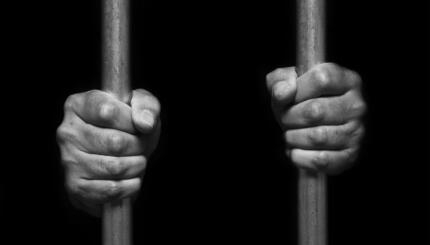(trans. Marcus Nathan Adler)
Benjamin of Tudela was a rabbi and world traveler. In 1165/6, he set off on a voyage through the Mediterranean region, Mesopotamia, Palestine, Arabia, Egypt, and other parts of Asia Minor and the Near East, returning to Spain in 1173, where he published the famous account of his journeys through the Jewish world. His Book of Travels has been translated into many languages, and is considered one of the most important descriptive works of the twelfth century.
The object of Tudela’s journey is unknown. Scholars speculate that he was a merchant and his voyage was a commercial venture. His Book of Travels contains information on many Jewish communities of the twelfth century, as well as general geographic, demographic, political, economic, and social conditions and descriptions of places which have made the work a classic
The following portrays Jewish self-government in Baghdad during the Abbasid caliphate, c. 1168. Benjamin of Tudela records the structure and function of the political leader of the Jews, the Exilarch (“Head of the Captivity”) and the spiritual and religious leaders of the Jewish community, the geonim, who headed the famous academies.
Thence [from Hadara], it is two days to Baghdad, the great city and the royal residence of the Caliph Emir al Muminin al Abbasi of the family of Muhammad. He is at the head of the Mohammedan religion, and all the kings of Islam obey him; he occupies a similar position to that held by the Pope over the Christians. He has a palace in Baghdad three miles in extent, wherein a great park with all varieties of trees, fruit bearing and otherwise, and all manner of animals.
There the great king, Al Abbasai the Caliph holds his court, and he is kind unto Israel, and many belonging to the people of Israel are his attendants; he knows all languages and is well versed in the law of Israel. He reads and writes the holy language (Hebrew)…
In Baghdad there are about 40,000 Jews and they dwell in security, prosperity and honor under the great Caliph, and amongst them are great sages, the heads of the Academies engaged in the study of the law. [This population figure is greatly exaggerated. Scholars estimate Jewish population in Baghdad at this time was closer to 4000.]
In this city there are ten academies. At the head of the great academy is the chief rabbi, Rabbi Samuel, the son of Ali. He is the “Head of the Academy Which is the Excellency of Jacob” [the “Gaon”]. He is a Levite, and traces his pedigree back to Moses our teacher. His bother Rabbi Hananiah, a warden of the Levites, is head of the second academy. Rabbi Daniel is the head of the third academy. Rabbi Elazar the scholar is head of the fourth academy. Rabbi Elazar the son of Zemach is the head of the order, and his pedigree reaches to Samuel the prophet. He and his brethren know how to chant the melodies as did the singers at the time when the Temple was standing. He is the head of the fifth academy. Rabbi Hasday, the “glory of the scholars,” is head of the sixth academy. Rabbi Haggai the Nasi is head of the seventh academy. Rabbi Ezra is the head of the eighth academy. Rabbi Abraham, who is called Abu Tahir, is head of the ninth academy. Rabbi Zakkai, the son of Bostanai the Nasi, is head of the Sium [last academy].
These are the ten batlanim [lit. “men of leisure;” here batlanim are men who had the leisure to devote themselves to community service] and they do not engage in any other work than communal administration; and all the days of the week they judge their countrymen, except on the second day of the week, when they appear before the chief Rabbi Samuel, the Gaon, who in conjunction with the other batlanim judges all those that appear before him.
And at the head of them all is Daniel the son of Hisdai, who is styled “Our Lord the Head of Captivity of All of Israel.” He possesses a book of pedigrees going back as far as David, King of Israel. The Jews call him “Our Lord, Head of Captivity,” [or the Head of the Exile, the “Exilarch”] and the Mohammedans call him “Saidna beg Daoud,” [noble descendant of David], and he has been invested with authority over all the congregations of Israel at the hands of Emir al Muminin, the Lord of Islam [the caliph at Baghdad].
For thus Mohammed commanded concerning him and his descendents; and he granted him a seal of office over all the congregations that dwell under his rule, and ordered that every one, whether Mohammedan or Jew, or belonging to any other nation in his dominion, should rise up before him (the Exilarch) and salute him, and that any one who should refuse to rise up should receive one hundred stripes. And on every fifth day when he goes to pay a visit to the great Caliph, horsemen, Gentiles as well as Jews, escort him and heralds proclaim in advance, “Make way before our Lord, the son of David, as is due unto him…”
He is mounted on a horse and is attired in robes of silk and embroidery with a large turban on his head, and from the turban is suspended a long white cloth adorned with a chain upon which the cipher of Muhammad is engraved…
The authority of the Head of Captivity extends over all the communities of Shinar, Persia, Khurasan and Sheba which is El-Yemen, and Diyar Kalach (Bekr) and the land of Aram Naharaim (Mesopatamia), and over the dwellers in the mountains of Ararat and the land of the Alans [in the Caucasus]…His authority extends over Siberia and the communities in the land of the Turks …Further it extends to the gates of Samarkand and the land of Tibet and the land of India.
In respect of all these countries, the Head of the Captivity gives the communities power to appoint Rabbis and Ministers who come to him to be consecrated and to receive his authority. They bring him offerings and gifts from the ends of the earth. He owns hospices, gardens and plantations in Babylon, and much inherited from his fathers, and no one can take his possessions from him by force. He has a fixed weekly revenue arising from the hospices of the Jews, the markets and the merchants, apart from that which is brought to him from far off lands. The man is very rich and wise in the Scriptures as well as in the Talmud. And many Israelites dine at his table very day.
In Baghdad there are twenty-eight Jewish synagogues, situated either in the city itself or in Al-Karkh on the other side of the Tigris; for the river divides the metropolis into two parts. The great synagogue of the Head of the Captivity has columns of marble of various colors overlaid with silver and gold, and on thee columns are sentences of the Psalms in golden letters. And in front of the ark are about ten steps of marble, on the topmost step are the seats of the Head of the Captivity and of the Princes of the House of David.
The city of Baghdad is twenty miles in circumference, situated in a land of palms, gardens and plantations, the likes of which is not to be found in the whole land of Shinar. People come thither with merchandise from all lands. Wise men live there, philosophers who know all manner of wisdom and magicians expert in all manner of witchcraft.
ark
Pronounced: ark, Origin: English, the place in the synagogue where the Torah scrolls are stored, also known as the aron kodesh, or holy cabinet.


